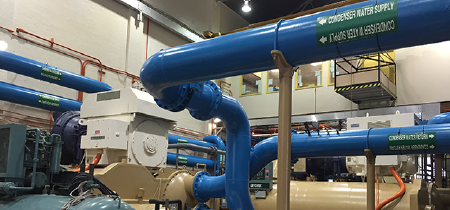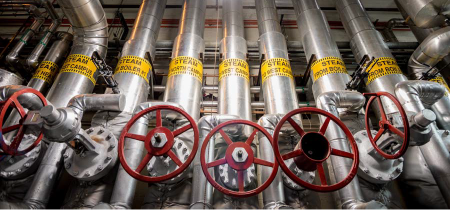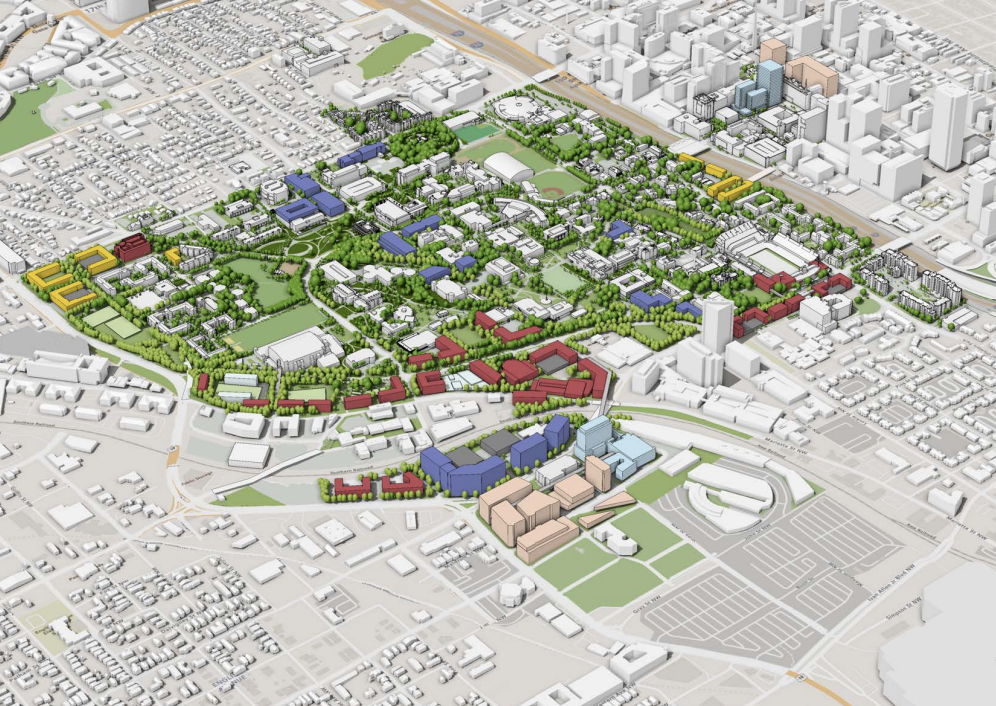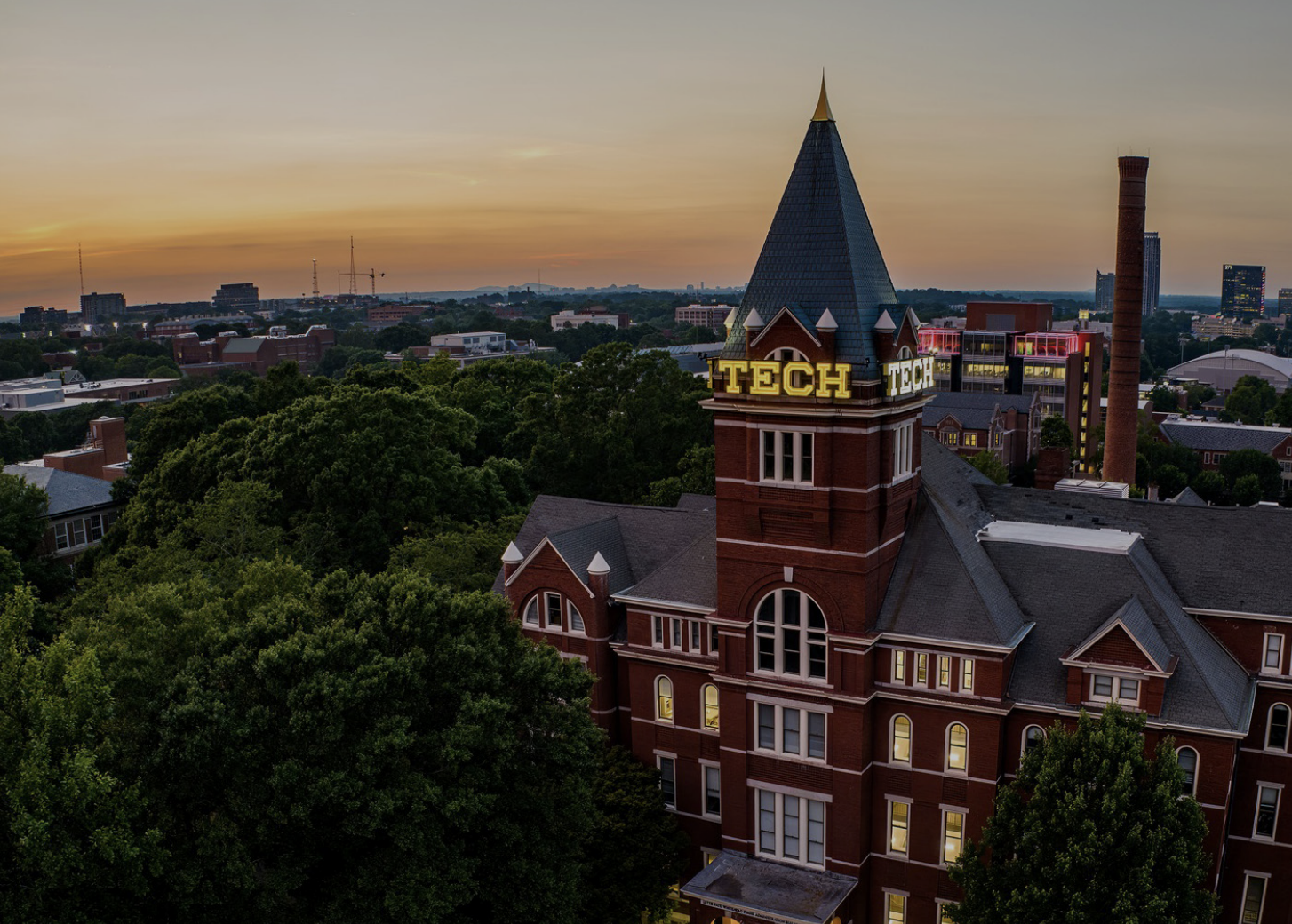(text and background only visible when logged in)
Infrastructure's Approach
Providing the Institute with reliable and cost effective utilities helps to reduce our impact to the environment and to our bottom line. All efforts support our centralized mission to reduce the Institute’s resource consumption in order to meet energy, greenhouse gas, and sustainability commitments.
Our district energy plants provide chilled water to over 7 million square feet of building space and steam to 4.7 million square feet of building space. Georgia Tech applies a comprehensive, continuous-improvement method to campus energy performance and our seasoned energy and utility experts often engage with Georgia Tech students and researchers. Campus infrastructure data is available via this form.
Our Location
O'Keefe Building 151 6th Street NW Atlanta, GA 30313
Ongoing Infrastructure Projects
Below you’ll find an overview of how Georgia Tech’s chilled water and steam systems operate to provide reliable heating and cooling within buildings across campus. These are some of the critical infrastructure that supports daily life at Tech. To learn more about the future of campus infrastructure and utilities, check out the Campus Utility Master Plan below.

How the Chilled Water System Works
- Chiller Plants: Georgia Tech has two primary chiller plants—the 10th Street Plant and the Holland Plant—that house chillers, cooling towers, and pumps.
- Cooling Process: Chillers cool water using a refrigeration cycle, then this chilled water travels through underground pipes and circulates through coils in air handling units (AHUs) within buildings.
- Air Conditioning: Fans blow warm air from the building across these cold coils, removing heat and cooling the air before it is circulated back into the building.
- Return and Reuse: The warmed water then returns to the chiller plant to be cooled again, continuing the cycle to maintain comfortable temperatures across campus.
- Periodic Planned Outages: Generally timed during low occupancy on campus, these planned outages allow for adjustments and upgrades to the distribution system.

How the Steam System Works
- Energy Plants: Georgia Tech primarily uses natural gas to generate steam but also has an electric boiler and a propane backup system.
- Distribution: This high-pressure steam is then piped underground to buildings across the campus.
Uses: Inside the buildings, the steam is used to provide:
- Heating: Steam is used directly or indirectly to warm spaces during colder months.
- Domestic Hot Water: It also heats the water used for sinks, showers, and other domestic purposes.
- Sterilization: In facilities requiring it, steam provides sterilization capabilities.
The steam condensate is then returned to the boilers to complete the system.
- Periodic Planned Outages: Generally timed during low occupancy on campus, these planned outages allow for adjustments, upgrades, and repairs to the distribution system.
Workstreams
To manage complexity and focus efforts, the plan is structured around four workstreams. Each targets key infrastructure areas while identifying synergy opportunities.
- Electrifying campus heating systems
- Enhancing thermal distribution
- Expanding campus-wide power distribution
- Implementing on-campus solar energy (PV)
- Reducing potable water use
- Improving water distribution and stormwater management
- Extending data pathways for reliability
- Reducing natural gas through electrification
The Project Goals
At their heart, the project goals were to define the best use of capital to meet the institute’s needs and support its aspirations over the next 10 years.
Georgia Tech’s growth and renewal is dependent on a robust and adaptable campus infrastructure. The utility master plan projects must not only provide the new capacity required for expansion but also extend distribution systems to support innovative new buildings. They must anticipate and address the evolving needs of renovated and revitalized spaces, ensuring the entire campus is poised for future success and sustainability.
Supporting Georgia Tech’s Climate Action Plan (CAP) is crucial for achieving the campus’s energy, carbon, and water goals. New infrastructure projects must prioritize sustainability by addressing high heating energy users, reducing their load, and shifting fuel sources. These impactful projects, even if not directly tied to the CCP, significantly reduce Scope 1 emissions.
Resiliency empowers infrastructure to withstand system failures and continue meeting campus needs with minimal disruption. While the current infrastructure has vulnerabilities, particularly in distribution, the envisioned projects will address aging systems, create diverse pathways, and enable capacity to be swiftly redirected in failure scenarios ensuring a robust and adaptable campus for the future.
Infrastructure is the backbone that supports our buildings, and while its payback may not always be immediate, its long-term value is immeasurable. Every investment should strive to maximize returns, enabling operating savings to be reinvested into further infrastructure growth. By evaluating investments over a 20-year lifecycle, we can achieve sustainable paybacks through annual savings and the avoidance of future capital expenditures.
Looking Beyond 10 Years
Projects in the 10-year plan were chosen for their ability to support current needs while preparing for growth in the longer-term 2050 plan. This future-forward view helps prevent investments that could limit later development.
Engagement
The utility master plan goals were developed through a collaborative process with campus leaders and departments to align immediate infrastructure needs with long-term sustainability.
Prioritizing Projects
Projects that advanced multiple goals were prioritized in the implementation plan, while others were ranked for future consideration. As funding and campus needs evolve, these projects may become viable opportunities for future execution.
Matrix of Projects
Each proposed project was evaluated for its alignment with Georgia Tech’s infrastructure goals. These selected projects were chosen for their strong alignment with the project goals, ensuring they best address Georgia Tech’s near- and long-term priorities.
Conclusion
The most impactful projects in the Campus Utility Master Plan are those that deliver on multiple fronts: supporting campus growth, reducing carbon emissions, increasing resiliency, and maximizing return on investment.
By the numbers:
- Planned Investment: $238.9 million
- Projected Savings: $4.6 million in operating costs
- Carbon Reduction: 14,657 metric tons of CO₂
- Water Savings: 129 million gallons/year of potable water
- Benefits: Increased resiliency, sustainable growth, and long-term efficiency
For further information on the Utilities Master Plan, please reach out to Executive Director of Infrastructure Greg Spiro.

2050 Comprehensive Campus Plan (CCP) Building Growth

